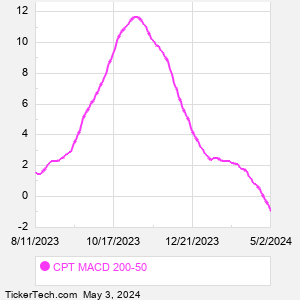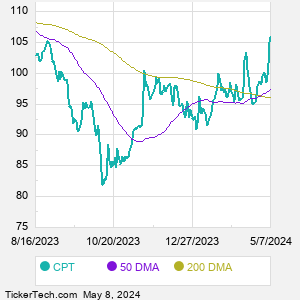Camden Property Trust is a real estate investment trust. Co. and all consolidated subsidiaries are primarily engaged in the ownership, management, development, reposition, redevelopment, acquisition, and construction of multifamily apartment communities. Co. owns interests in, operates, or are developing several multifamily properties comprised of various apartment homes across the U.S. Co. also owns land holdings.
When researching a stock like Camden Property Trust, many investors are the most familiar with Fundamental Analysis — looking at a company's balance sheet, earnings, revenues, and what's happening in that company's underlying business. Investors who use Fundamental Analysis to identify good stocks to buy or sell can also benefit from CPT Technical Analysis to help find a good entry or exit point. Technical Analysis is blind to the fundamentals and looks only at the trading data for CPT stock — the real life supply and demand for the stock over time — and examines that data in different ways. One of those ways is to calculate a Simpe Moving Average ("SMA") by looking back a certain number of days. One of the most popular "longer look-backs" is the CPT 200 day moving average ("CPT 200 DMA"), while one of the most popular "shorter look-backs" is the CPT 50 day moving average ("CPT 50 DMA"). A chart showing both of these popular moving averages is shown on this page for Camden Property Trust. Comparing two moving averages against each other can be a useful visualization tool: by calculating the difference between the CPT 200 DMA and the CPT 50 DMA, we get a moving average convergence divergence indicator ("CPT MACD"). The CPT MACD chart, in conjunction with the chart of the moving averages, basically helps in visualizing how the moving averages are showing convergence (moving closer together), or divergence (moving farther apart). |



